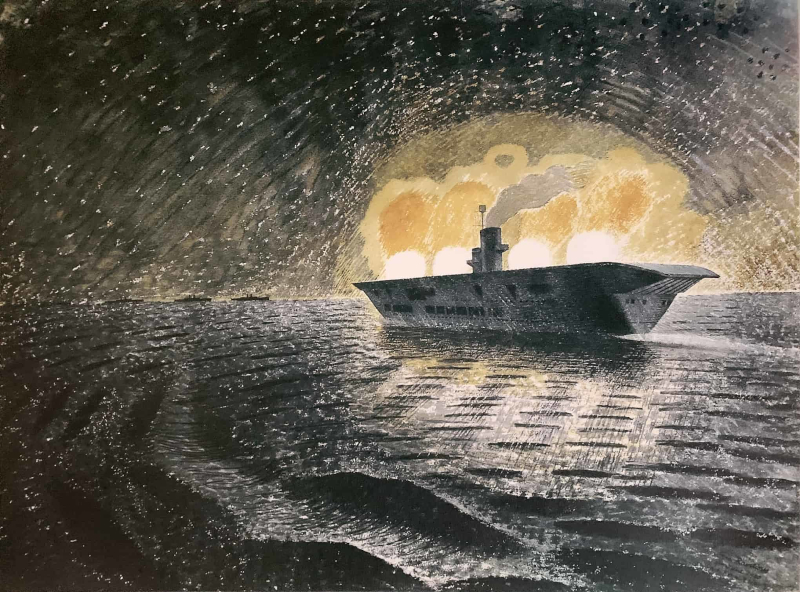Director – Margy Kinmonth – 2022 – UK – Cert. PG – 87m
***1/2
The career of the British watercolour artist tragically killed while serving as an official war artist in World War Two – now available to watch online following UK cinema release on Friday, July 1st 2022
The first official war artist to be commissioned in World War Two, Eric Ravilious was on an aircraft which set out from Iceland in 1942 and never came back. There is no exact record of what took place, covered by the phrase “missing in action”, but in all likelihood the plane went down in the sea. Kinmonth finds simple images to convey the incident, which appears in both her opening introduction to Ravilious’ life and her closing reel representing his passing – a warplane descending, our viewpoint falling towards the surface of the sea, an indistinct body moving in water filled with bubbles. At the end, the cold blue of the water contrasts with the gentler, rural green of the family house and surroundings back home.
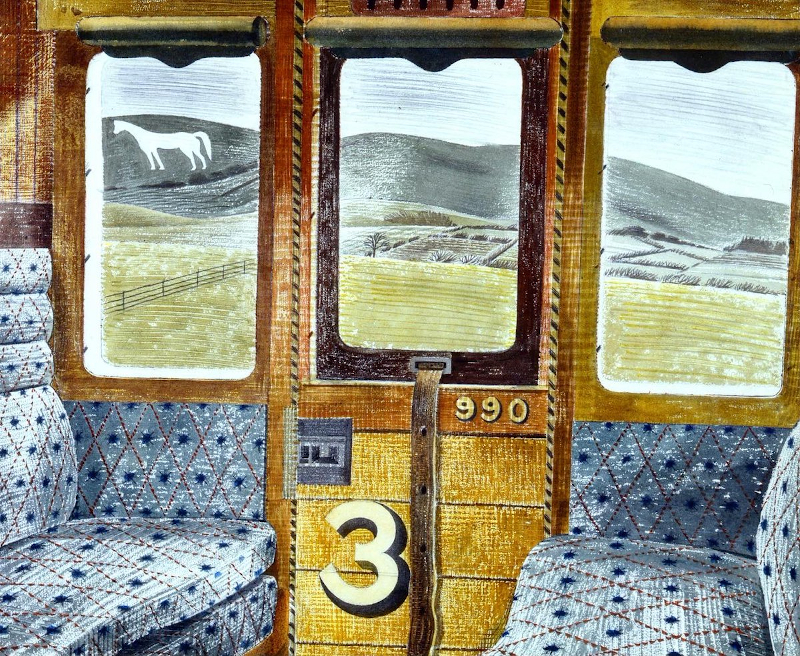
After his death, Ravilious’ art was largely ignored. Alan Bennett, an admirer of the artist’s work, puts this down to the work’s cheerful and unthreatening nature and a prevailing view that art should grapple with dark and foreboding subject matter. He remembers seeing Ravilious’ picture Train Landscape on the wall at school and recognising the third class carriage interior with the rolling landscape beyond – except that the real thing was much dirtier on account of the soot produced by the steam engine. Author and academic Robert McFarlane says of the pictures, “the path always leads the eye” and extols the artist’s ability to bring out what he describes as the English landscape’s “primitive quality”.
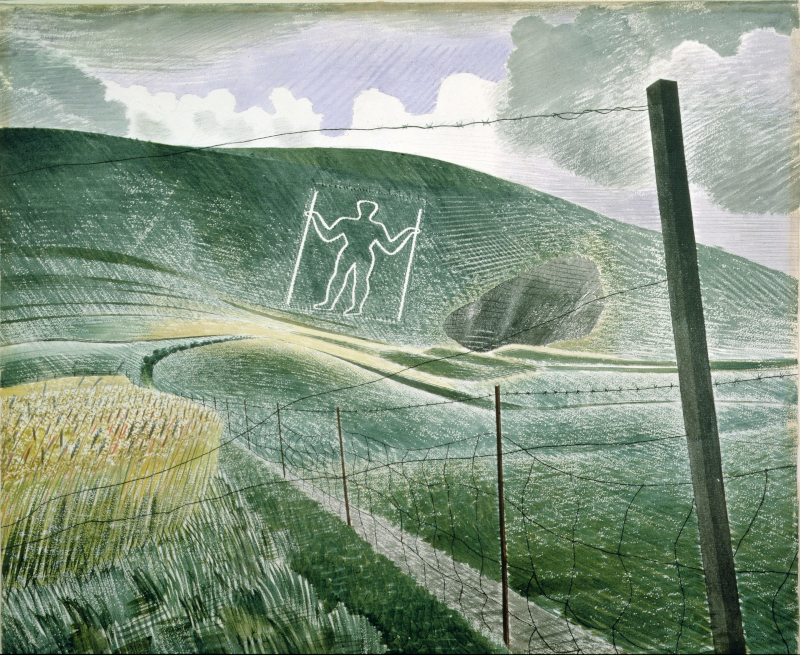
Born in Acton, London, in 1903, Eric Ravilious grew up in Eastbourne, Sussex. A love of drawing earned him scholarships to first Eastbourne College of Art in 1919 then the rarefied atmosphere of the Royal College of Art in 1922 where he was a contemporary of sculptor Henry Moore and eventually ended up being tutored by artist Paul Nash. The latter got him into the Society of Wood Engravers enabling Ravilious to produce commissioned work, much of it in book illustration. His real passion however, encouraged by Nash, was for watercolour and landscape (he couldn’t get on with the medium of oil paint at all). Making even a modest living proved a struggle through much of his life.
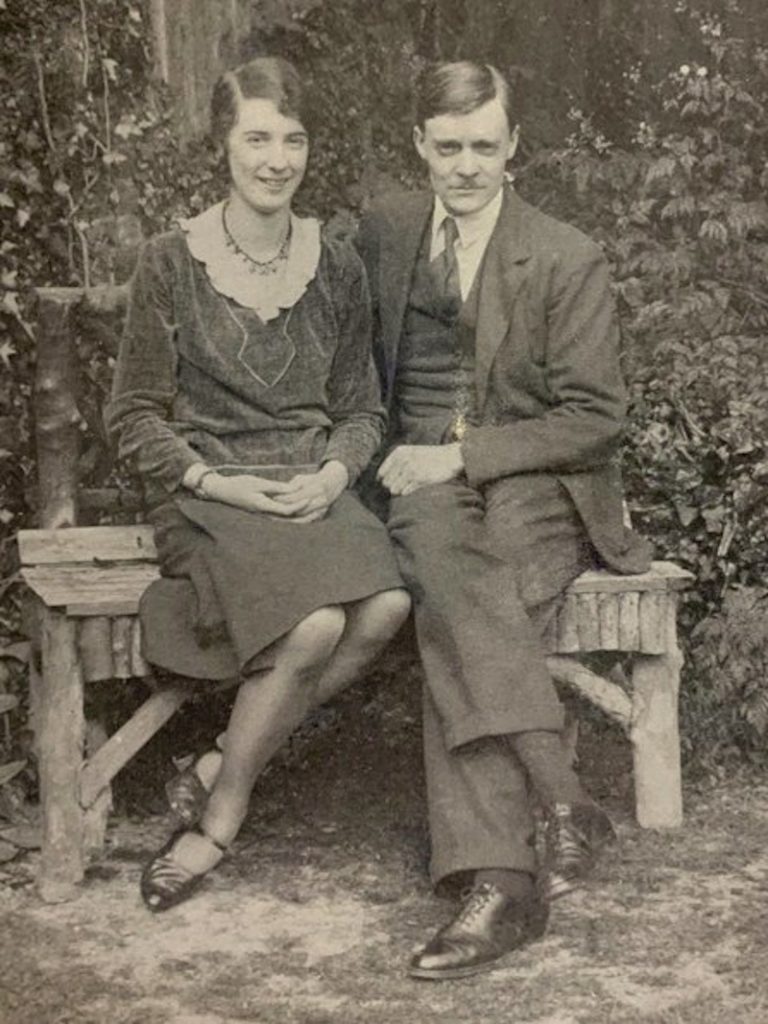
For a while between 1932 and 1934, Eric and his artist wife Tirzah “Tush” Garwood, who he had met whilst tutoring at Eastbourne College Of Art, lived in the house of Eric’s friend Edward Bawden and his wife in Great Bardfield, Essex. (Edward was a student friend from RCA days and the pair had painted a commissioned mural together at London’s Morley College, sadly lost forever when the building was later bombed in an air raid.) Eric and Tirzah subsequently bought a house near the Bawdens, and along with Edward became significant members of the group known as the Great Bardfield Artists.

The outbreak of war in 1939 changed everything. After a relatively peaceful period in the Royal Observer Corps watching the skies for approaching enemy aircraft, Eric was commissioned by Kenneth Clark as an official war artist, and found himself on destroyer HMS Highlander, where he had difficulty controlling his pencil while the ship was rolling around on the waves. Present day artist Ai Weiwei comments that in such situations, you’re so drawn to the condition that you find yourself unaware of the danger.
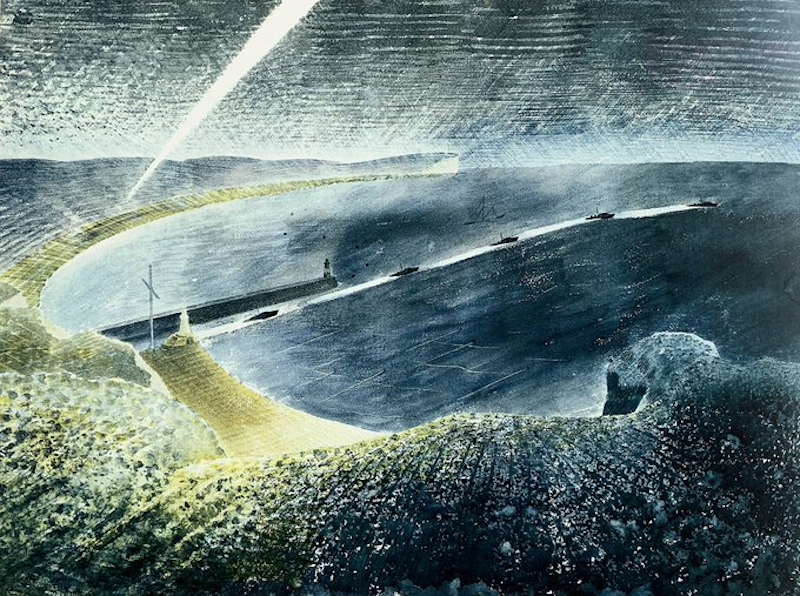
A further stint followed on HMS Dolphin, which sounds like another ship – you’d think from watching the film it was a submarine – but was in fact the Portsmouth location of the Royal Navy Submarine Service where Ravilious found himself drawing men at work in the cramped interiors of the submarines.
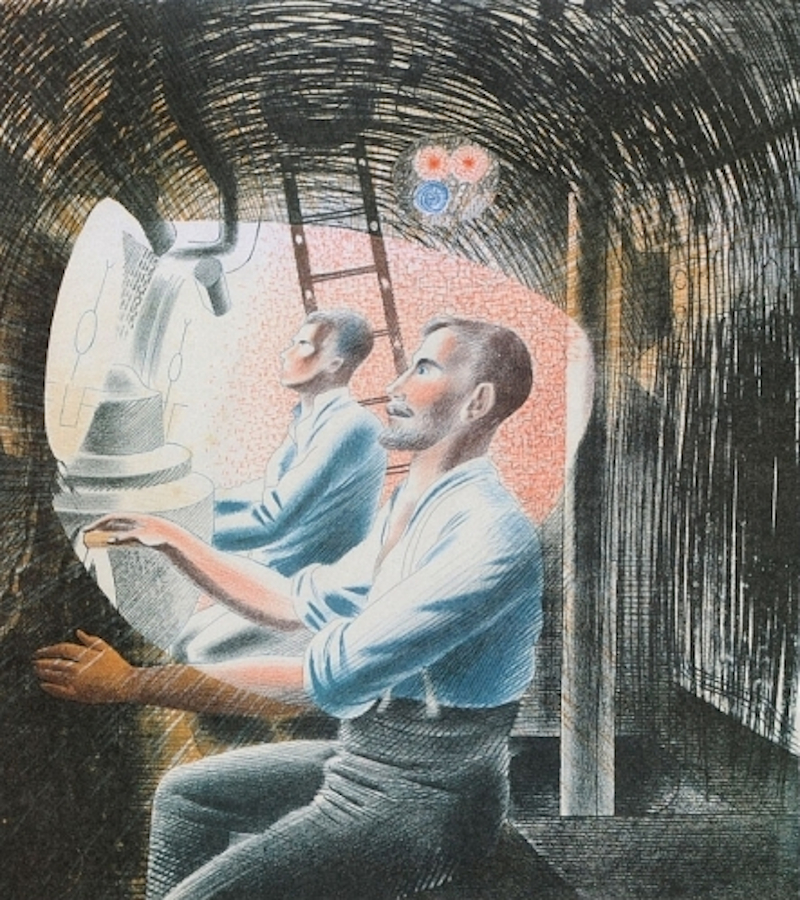
Eric occasionally fell foul of the Ministry of Information’s censors, such as when he produced a picture of a magnetic mine and coastal defences in Newhaven, which were deemed unsuitable for public exhibition because there were elements in the visuals the MOI didn’t want the enemy to see. One wonders if something similar was going on when the Ministry sent a letter to the house in Great Bardfield asking if they could buy the original drawings of Eric’s submarine prints, an incident the film mentions in passing but doesn’t explore.
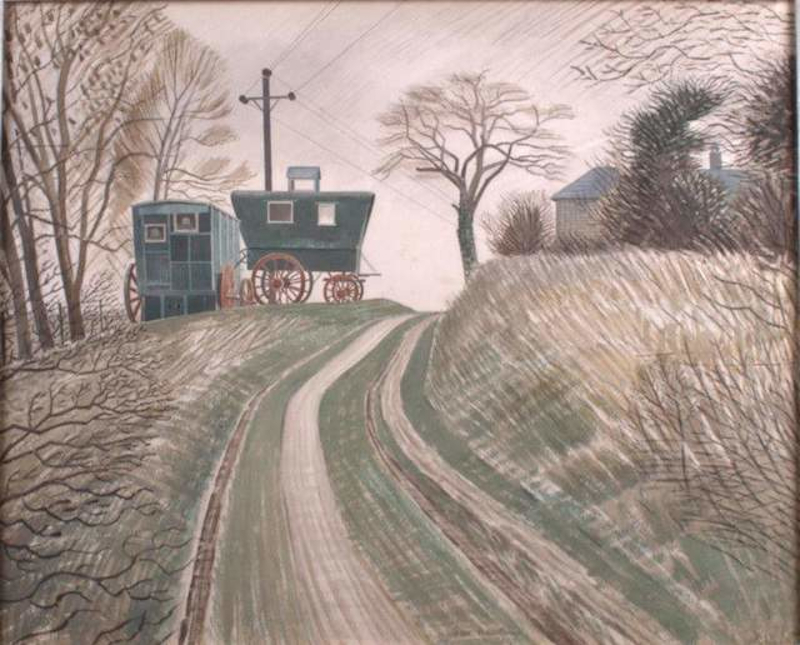
As wartime correspondence is exchanged between Eric away on active service and his wife Tirzah in Great Bardfield, where she juggled her own artistic practice with looking after the couple’s three kids, we hear stories of one of the boys nearly being killed by a bomb whilst playing in the sandpit and of aircraft circling overhead making us intensely aware of the uncertainty of people’s everyday lives during the conflict. There was always the sense whenever Eric went away seconded to this or that part of the British Navy that he wouldn’t come back, and in 1942 that’s exactly what happened.
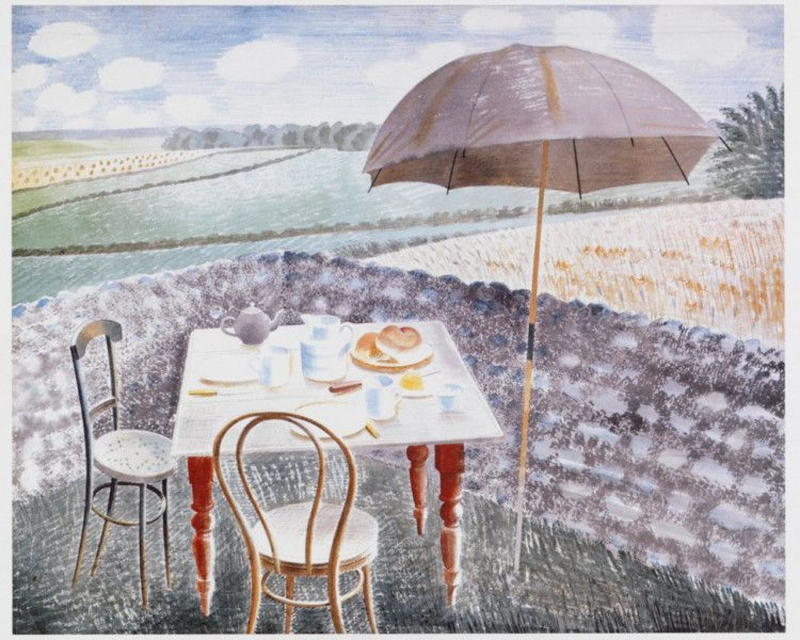
In recent years, both the earlier landscape paintings and the later wartime work have been rehabilitated. This clear and helpful look at the Eric Ravilious’ life and career, which in passing gives quite a bit of space to wife Tirzah Garwood too, also features contributions and reminiscences from the couple’s sole surviving child Anne, who has edited a number of books about both her parents’ work as artists, as well his granddaughter Emma and contemporary artist Greyson Perry, another Ravilious admirer.
A mention should go to the striking voice-over work in the film, with Eric and Tirzah’s letters being read by Freddie Fox and Tamsin Greig respectively, while Jeremy Irons crops up to briefly to read the condolence message sent to Tirzah after her husband goes missing in action.
Eric Ravilious: Drawn To War is now available to watch online.
It was originally released in UK cinema releases on Friday, July 1st 2022.
For regular Ravilious images, follow @Ravilious1942 on Twitter.
Trailer (Cert. 12a):
